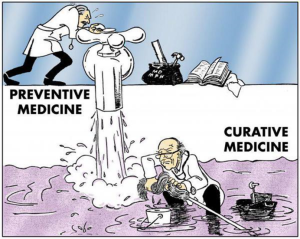By Manroy Sahni (@manroysahni)
Unfortunately, the vast majority of medical schools dedicate very little teaching time to the health benefits of physical activity and how to deliver lifestyle advice to patients that would profit. As such, this course stood out as an opportunity to gain some background knowledge and learn practical tips from the experts on how to get patients MOVING MORE and SITTING LESS- and it definitely didn’t disappoint!
The course provided a solid base of underpinning evidence for promoting exercise in patients suffering from a multitude of chronic illnesses including diabetes, cardiovascular disease, arthritis, osteoporosis and cancer. Especially interesting for me were the talks outlining practical strategies to get patients moving. Topics included brief interventions during consultations, tips to motivate patients in general practice and breaking down common barriers. We even had a chance to try Nordic walking!
I learned valuable points and tips that I will use to encourage physical activity and lifestyle optimisation when talking with patients.
 For example an interesting analogy was that getting people motivated and doing more physical activity is like driving. When you’ve been stationary and want to get the car moving what gear do you go in to? First gear. So people who have been inactive should initially go into first gear by trying something easy- like standing more instead of sitting. If they try to go straight into 4th gear (e.g. a marathon) they will stall. Therefore when promoting physical activity we should encourage patients to take it slowly and go through the gears- this way they will be less likely to stall.
For example an interesting analogy was that getting people motivated and doing more physical activity is like driving. When you’ve been stationary and want to get the car moving what gear do you go in to? First gear. So people who have been inactive should initially go into first gear by trying something easy- like standing more instead of sitting. If they try to go straight into 4th gear (e.g. a marathon) they will stall. Therefore when promoting physical activity we should encourage patients to take it slowly and go through the gears- this way they will be less likely to stall.
Health care professionals are now very good at smoking cessation advice, with many aware of the ASK, ADVISE and ACT intervention to identify patients at risk and point them in the right direction for help. Similar brief interventions were outlined to promote the benefits of physical activity and motivate patients to make lifestyle changes. Utilising these strategies, we as health care professionals can make every patient contact count.
 The importance of working an exercise history into each standard medical history was also reinforced. This is a topic that is again relatively neglected in undergraduate training and something that should be stressed considering the increasing burden of (potentially preventable) chronic disease gripping the nation. After all it’s easier to turn off the tap than to mop the floor.
The importance of working an exercise history into each standard medical history was also reinforced. This is a topic that is again relatively neglected in undergraduate training and something that should be stressed considering the increasing burden of (potentially preventable) chronic disease gripping the nation. After all it’s easier to turn off the tap than to mop the floor.
*****************************
Manroy Sahni is a fourth year medical student at the University of Birmingham. He is co-president of the Birmingham University Sports and Exercise Medicine Society and involved in promoting healthy living and lifestyle change.